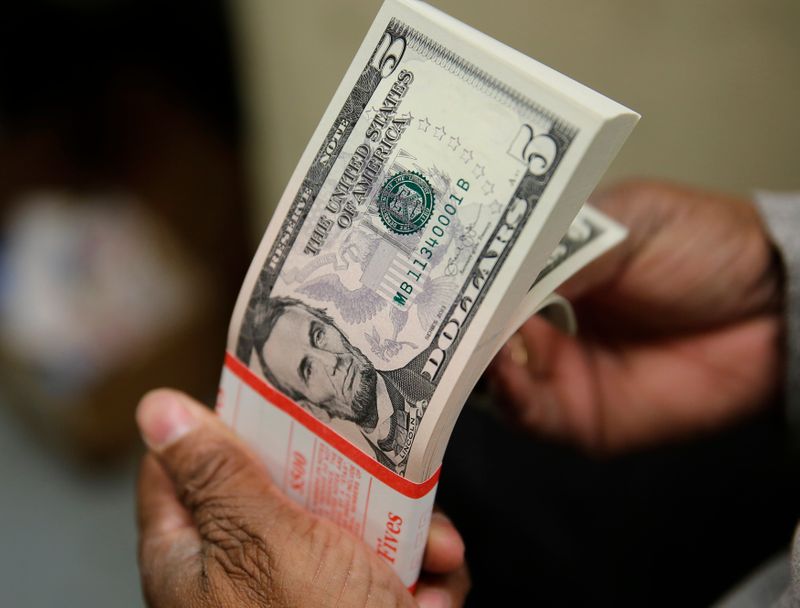By Tom Westbrook
SINGAPORE (Reuters) - The dollar drifted higher on Friday, helped by strong U.S. jobs data as well as firmer global demand for safe-havens amid concerns about the coronavirus recovery, setting the currency up to potentially snap a seven-week losing streak.
Soft Chinese retail and production figures cast a pall over the mood in Asia, dragging on the risk-sensitive Australian and New Zealand dollars.
The Aussie
The kiwi
"Risk sentiment is slowing down," said Westpac FX analyst Imre Speizer. "It's too early to say the whole (dollar) downtrend is over...but it's got potential and at the very least it's putting a cap on the Aussie and kiwi."
China's industrial output rose more slowly than expected in July and retail sales fell for a seventh straight month, suggesting some bumps in even the world's most promising rebound.
Troubling signs also emerged on the health front in Asia, with a dozen new cases in New Zealand - which is considering whether to ease or extend its lockdown of Auckland - and the biggest daily jump in new cases in South Korea since March.
Overnight the weekly number of applications for unemployment benefits in the United States dropped below one million for the first time since the start of the pandemic, with 963,000 claims coming in below expectations for 1.1 million.
But beyond buoying the dollar any relief was shortlived, as some 30 million Americans are out of work and an aid package to keep stimulus flowing in the economy has stalled in Congress.
Against a basket of currencies (=USD) the dollar remains 0.1% lower for the week, but it has appeared to arrest a slide that has it about 9.5% below its March peak.
YEN DROPS
This week has also been a bad one for the Japanese yen, which is headed for its biggest weekly drop against the dollar in two months as a jump in U.S. yields has attracted flows from Japan.
Benchmark U.S. 10-year yields (US10YT=RR) are up nearly 15 basis points this week, the sharpest jump since early June, as the U.S. Treasury flooded the market with supply and as some investors grew more positive about the long-term outlook. [US/]
The yen
"After threatening to break lower towards the end of last month, dollar/yen has moved back within the 106.00 to 108.00 range which has held for the most part since April," said MUFG currency analyst Lee Hardman.
"The yen has been undermined in part by the ongoing improvement in global investor risk sentiment," he said.
The move is also broad, with the yen down 1.2% this week to an almost two-year low against the Swiss franc (JPYCHF=R) and falling more than 1% to multi-month lows against the euro (EURJPY=R) and pound (GBPJPY=R).
That is welcome in Japan, where it benefits exporters which has helped propel the Nikkei stock index (N225) to a six month peak this week. (T)
Elsewhere the pound

On the data schedule later today are preliminary European employment and GDP numbers, as well as U.S. retail sales figures, with investors likely to focus on any signs of divergence between the U.S. and European recoveries.